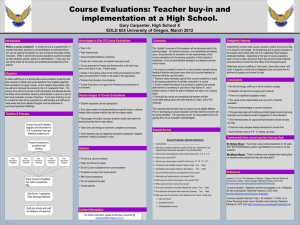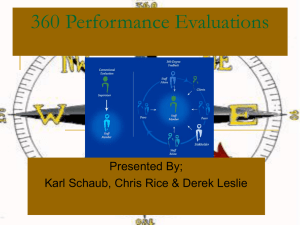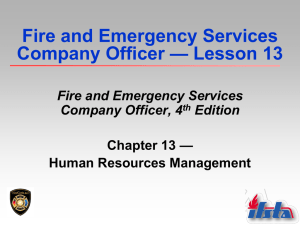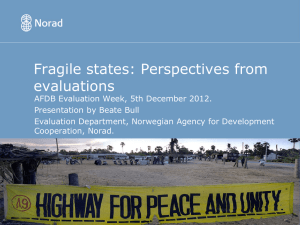Document
advertisement
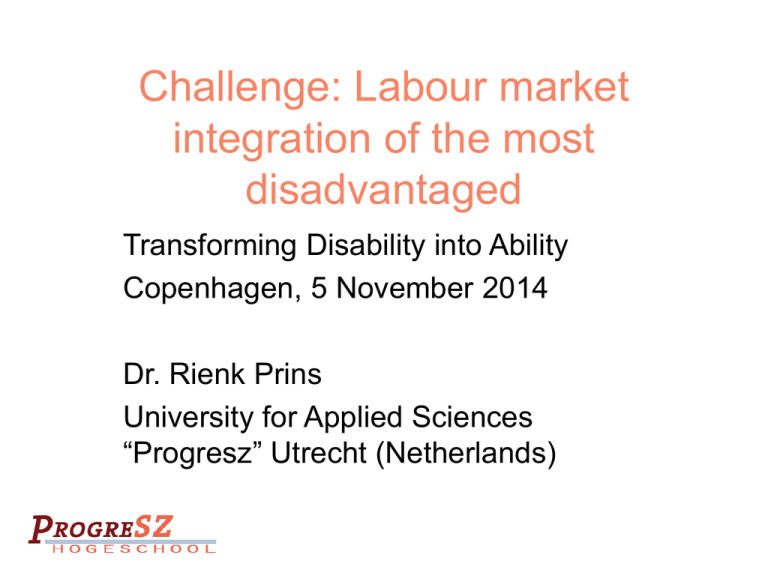
Challenge: Labour market integration of the most disadvantaged Transforming Disability into Ability Copenhagen, 5 November 2014 Dr. Rienk Prins University for Applied Sciences “Progresz” Utrecht (Netherlands) Contents • Target group • Demarcation • Backgrounds of increasing interest • Selected programmes and experiences from: • Netherlands • United Kingdom • Norway • Observations, evaluations and lessons Demarcation • General: • The most disadvantaged / the most vulnerable / the hardest to help • Multiple disadvantaged groups • Specific (“operational definitions”): Example Netherlands • Persons on benefit • Simultaneous: two (or more) connected problems / barriers • Unable / unwilling to arrange themselves control or solution of problems • Related approaches: • Focus on families (e.g. UK: Troubled Families) • Focus on poverty neighbourhoods (NL: Neighbourhood Coach) Backgrounds of rising interest • Current benefit / integration systems not appropriate: • contingency focused (the sick, the disabled, the unemployed, …) • less effective in helping customers with combinations of disadvantages • Most disadvantaged: • passive, often do not take initiative for support to employment • “grey area clientele” • Service delivery problems • Oversupply / uncoordinated agencies • Lack of expertise • Organizational conditions (work load case managers) Small international overview • Three countries dealing with the target groups: •Netherlands: exploring scope and delivery problems, pilots and experiments •UK: targeted programmes, (meta) evaluations •Norway: generous programme implemented NL: Scope • Estimating the size of the problem: • Data sources (2008, 2009): persons receiving benefits (sickness, disability, unemployment, social assistance) • Estimate on all benefit recipients: • 40%: “have multiple problems” (2 or more barriers) • Estimate on some specific categories: • • • • Poorly educated/skilled Former prisoners Social assistance recipients Young persons on benefit 66% 59% 51% 24% NL: Provision of services (1) • Providers/case workers/experts interviews (N=27): • Large variation in number of actors/agencies in the chain of service provision • Large variation in their goals and criteria: e.g. •Prevention social exclusion, •Empowerment •Mental health rehabilitation •Employment • Waiting lists, availability of service providers (e.g. debt management) NL: Provision of services (2) • Cooperation and coordination “in the chain” • “Who has the lead”, who sets priorities? • Availability of budgets • Many variations in organizational strucures • Dilemma’s / Paradigms: • Voluntary or forced? • Work First? Health First? Housing First? • “What works for whom?” • More org. problems: poverty neighbourhood/ poverty family programmes NL: Pilot projects and Information • Pilot projects on various aspects, e.g.: • Integrated intake procedures (care needs, integration needs) • Cooperation of mental health care providers and municipal social welfare office • Integrated approach of health promotion and access to employment in welfare recipients • IPS oriented (Individual Placement and Support) • Publications: • Overviews of “promising (integrated) approaches” , “good practices” • Training material for case workers • Fact sheets (“knowledge documents”) UK: Demarcation • Def.: Diverse group with no clear identity • Those with most severe / multiple barriers to work: • • • • • • Drug or alcohol dependency Persistent /ex offenders Homeless people, Poor basic skills, learning difficulties, Poor English language skills, refugees Persons with mental health conditions • Many projects on specific categories UK: Evaluations • Little information: ”what type of provisions work best” for most disadvantaged: • No/poor collection of customer characteristics and performances on project level • Heterogeneous client groups • Nature of interventions varies across individuals, no isolated measures • Lack of control groups • Lessons: more relying on qualitative evaluations (interviews: staff, administrators, employers, clients) UK: Lessons (1) • Lessons from qualitative evaluations of specific programmes (ex offenders, drug abusers): Need for • Support, advice, guidance and motivational confidence-building assistance • Individually tailored programme / action plan • First step often: addressing mental health conditions, housing problems, etc. (Not: “Work First”) • Basic questions on aims: • Realistic aims: Is employment an appropriate and feasible goal? Or: • Strive for : greater stability in life - but in association with (further) claiming of benefits? UK: Lessons (2) • Delivery aspects: • Clients: least likely to volunteer for support Outreach approaches needed • One-to-one support from a personal advisor • Staff with empathy, good communication skills • “It takes time to help the most disadvantaged”: 6-12 month period: insufficient • Appropriate case load for advisor/provider • In depth knowledge of local organizational infrastructure • Practical inter-organizational referral arrangements (to prevent drop out) Norway: QP QP Aims • History: • • • • 2007: Start pilots 2009: Interim evaluation / EU Peer Review 2010: Nation wide implementation (and legal entitlement) 2014: Evaluation report • Aim: fight poverty, by promoting self-supporting employment • Target group: Hard to employ social assistance claimants with reduced work capacity and variety of problems: • Poor language skills, disrupted schooling, little or no work experience • Often: mental disorders, drugs problems • Aged 19 - 67 QP: Key features (1) • Programme: • “Costly and ambitious” • Combines generosity and activation • Offers income safety, requires effort to become self sufficient. • Key elements programme: • Full time (37,5 hours/week) • Duration: initially 1 year (max. 2 years) • Income support (“quasi wage”): € 20 000/ year (< 25 years: 2/3) • Allowances (child support, housing) • QP benefit: taxed and holiday privileges (as regular labour) QP: Key features (2) • Tailored qualification and activation programme • Agreed by client and case worker • Plan elements: mixture: • Consultations • Medical rehabilitation, therapy, sports • Skills upgrading • Employment training • Social training Structure QP Initial evaluations (1) • End 2010: 17 214 participants • Plan completed: 4 968 (29%) • Dropped out: 1 414 (8%) • After completion: • 31% in regular employment • 7% entered regular education • 62% continued benefit dependency (temporary, permanent disability benefit, social assistance) Initial evaluations (2) • “Success factors” (interviews): • Individually tailored programme, flexibility criteria • Job training with “ordinary employers” • Clients: • Income support: financial stability • Plans fitted to individual needs • QP case workers: • Received specific training (employment issues) • Adapted case load: 18 clients (other schemes: ca. 86 clients) • Active follow up approach and adequate IT system • Weaknesses: • Transfer from health employment interventions • Full time programme: often not feasible EU Peer Review Evaluation (2010) • Very positive: QP reflects social inclusion policy EU advocates: • • • • One stop shop Integrated approach (work and health) Adequate income support Coordination of several administrative levels (municipality, region, national) • One coordinator / case manager: • both internally (public actors) and • externally (e.g. care provider, employer) • Clients and case workers: satisfied “Final” evaluations (2014) • Register data entrants 2008 – 2011 (N=19 211) • • • • Participating >2 years: 23% Mean age: 33.7 Non-native: 50.7% High school: 16.1% • Main success criterion employment: • QP: reduces employment slightly during first 1-2 years of participation • 3 years after QP entry: 20% point increase in employment probability (stat. sign.) • Most additional jobs: poorly paid / very small • So: still high dependency of transfers from welfare state Some conclusions (1) • Policy / programme level: • Shared Goals (employment, less barriers, stability) • Programme features: • • • • Large variations contents/structure of programmes Long lasting Shared responsibilities (case worker/client) Integration work focussed interventions • Dilemma’s: e.g. • Voluntary vs compulsory • Evaluations: more on “process” than “effects” Some conclusions (2) • Operational level: • Active approach to client: • Outreach • Close monitoring and supervision • Organizational issues needing attention: e.g.: • • • • • • Multidisciplinary cooperation Commitment and consensus Various coordination models Agreement on budgets and criteria Availability of services (waiting lists) Working conditions/ work load case managers





